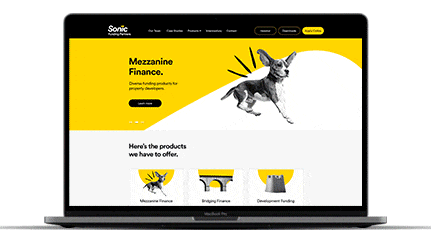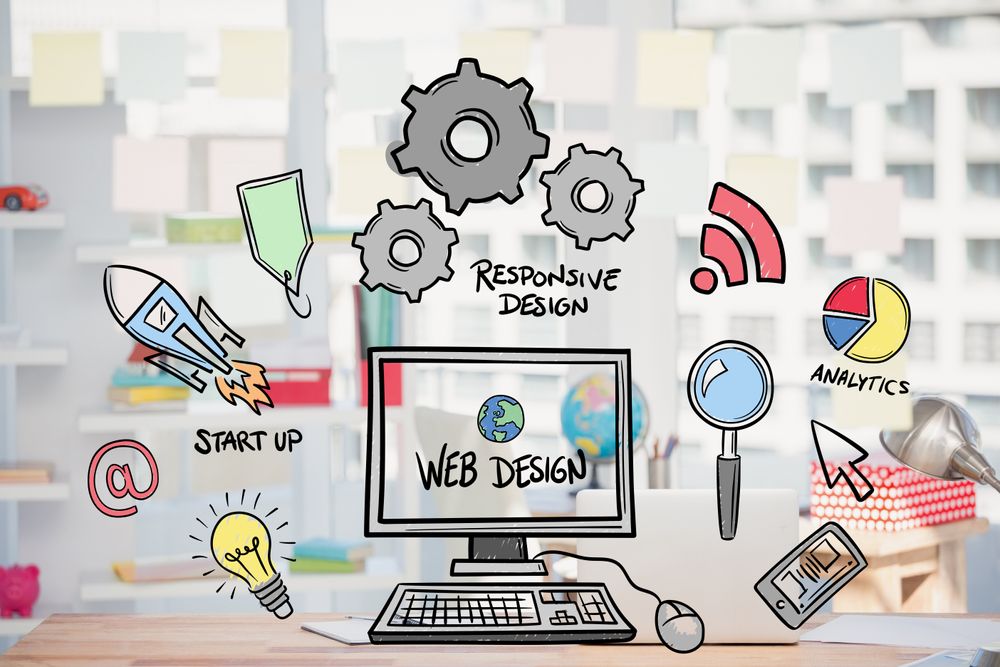How Website Design in copyright Helps Boost Your Online Visibility
How Website Design in copyright Helps Boost Your Online Visibility
Blog Article
Achieve Online Success With User-Friendly Internet Site Layout
In the progressively affordable digital landscape, the design of an internet site can be a crucial variable in determining a company's success. Easy to use style not just improves the overall customer experience yet additionally influences vital metrics such as conversion, engagement, and retention rates.
Significance of Customer Experience
User experience (UX) plays a critical function in the success of a website, as it directly affects user fulfillment and engagement. A favorable UX makes sure that visitors can navigate the website easily, gain access to information quickly, and full desired actions, such as signing or making an acquisition up for a newsletter, without disappointment.
In a digital landscape where competitors is strong, a site that prioritizes UX can dramatically enhance brand name loyalty and retention. Individuals are more probable to go back to a website that uses a smooth experience, creating a cycle of repeat brows through and increased consumer lifetime worth. Furthermore, reliable UX layout can decrease bounce rates, as users are less inclined to leave a site that satisfies their needs successfully.
Moreover, search engines increasingly consider user experience aspects when ranking sites. Therefore, spending in individual experience is important for accomplishing lasting success in the digital industry.
Trick Concepts of User-Friendly Design
A successful user-friendly style depends upon a number of vital concepts that improve functionality and accessibility. Most importantly is simplicity; a clutter-free interface allows individuals to browse effortlessly, lowering cognitive lots. This concept stresses the relevance of clear and succinct content, enabling customers to discover information swiftly without unnecessary diversions.
Consistency is one more crucial element. Regular usage of layouts, colors, and typefaces cultivates experience and develops trust. Individuals must really feel comfortable as they explore different areas of the internet site, knowing that similar elements signify relevant functionalities.
Effective typography also plays a vital function in easy to use layout. Legible fonts, proper sizes, and sufficient spacing make certain that web content is easily legible across various tools. Incorporating intuitive visual hierarchies assists users recognize essential information and actions at a glance.

Essential Functions for Navigation
Effective navigation is crucial for any user-friendly site, as it straight influences the general individual experience. A well-structured navigation system permits customers to find info rapidly and efficiently, lowering irritation and increasing engagement.
One vital attribute is a clear and instinctive food selection that classifies web content practically - website design copyright. This menu should be quickly available from every web page, frequently positioned at the top or on the side of the website. Furthermore, including breadcrumb navigation helps users comprehend their area within the site hierarchy and makes it much easier to backtrack
Browse performance is one more important part, making it possible for customers to find details content without sorting via multiple web pages. This function should be plainly presented and receptive to variations in input.
In addition, a mobile-responsive style makes sure that navigating continues to be seamless across devices. As mobile usage remains to increase, menus ought to adapt to various display sizes without jeopardizing performance.
Finally, aesthetic signs such as highlighting the energetic web page and utilizing hover effects can boost customer interaction. By integrating these crucial features, web site designers can develop a navigational experience that is not just user-friendly however also encourages exploration and retention.
Access Considerations
Accessibility considerations are essential to creating a straightforward internet site that deals with all people, no Click This Link matter their impairments or capabilities (website design copyright). Sites need to be designed to make certain that customers with visual, auditory, cognitive, or motor impairments can engage with content effectively. This begins with adherence to the Internet Content Accessibility Standards (WCAG), which give a framework for making digital web content much more available
Key methods include making use of descriptive alternative message for pictures, guaranteeing color comparison ratios fulfill access requirements, and giving inscriptions for multimedia components. Additionally, the navigating ought to be instinctive, allowing users to tab through web links and interactive components conveniently. Carrying out key-board visit homepage navigating is crucial for those not able to use a mouse.
Additionally, succinct and clear language enhances understanding for individuals with cognitive constraints. Forms need to be simple, with labels and directions that are easy to comprehend. Routine accessibility testing, including individual responses from individuals with impairments, can help recognize obstacles and improve functionality.
Gauging Design Success

Individual feedback surveys and use testing are crucial in examining the performance of design components. These techniques allow designers to gather direct input from customers, determining discomfort factors and locations for improvement. In addition, tracking heatmaps can disclose where customers click most frequently, aiding to notify layout changes and content prioritization.
Analytics tools play a crucial function in determining style success by supplying data-driven understandings. Google Analytics can track individual behavior, disclosing patterns that indicate whether the layout is impeding the user or assisting in trip. Ultimately, an effective web site design not only satisfies organization objectives but additionally promotes a seamless and satisfying customer experience, driving interaction and loyalty over time. On a regular basis revisiting these metrics makes sure that the internet site advances in placement with individual requirements and sector ideal techniques.
Final Thought
Prioritizing customer experience reference via simpleness, user-friendly navigation, and effective responses systems not just boosts individual engagement and fulfillment but also promotes brand loyalty. Including vital navigation functions and access factors to consider additionally makes certain that all individuals can efficiently engage with the site.
Websites should be designed to make sure that individuals with visual, acoustic, cognitive, or motor disabilities can engage with material successfully.Measuring design success entails assessing just how successfully a site meets its desired goals while providing a positive customer experience. Google Analytics can track customer behavior, disclosing patterns that indicate whether the style is preventing the individual or assisting in trip. Ultimately, an effective web site design not only meets organization purposes but also promotes a seamless and enjoyable user experience, driving involvement and loyalty over time. Focusing on customer experience with simplicity, intuitive navigation, and effective feedback mechanisms not just improves individual engagement and complete satisfaction but additionally promotes brand name commitment.
Report this page